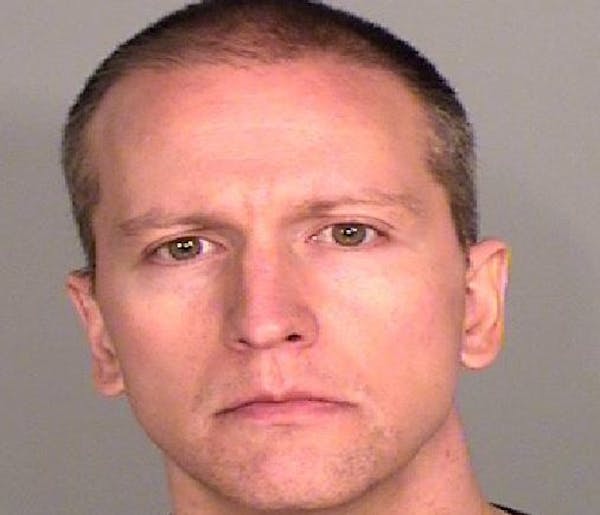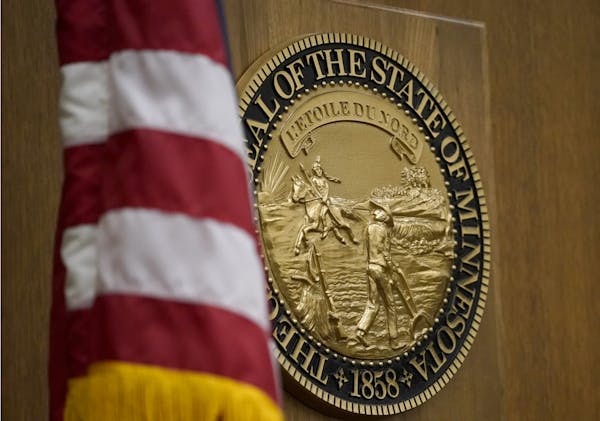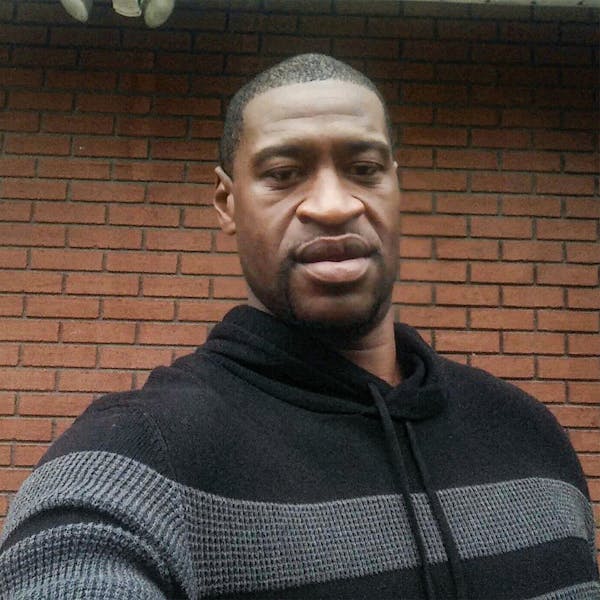Security was already going to be tight at the Hennepin County Government Center in downtown Minneapolis for the upcoming trial of Derek Chauvin in the death of George Floyd.
And then on Jan. 6, an insurgent mob overtook the U.S. Capitol and sent members of Congress running for their lives. Days before jury selection for Chauvin's trial begins Monday, the distinctive 24-story, enclosed twin-tower government building is already closed to almost everyone, including the 2,500 people who normally work there. "The fear of having the government center overrun is real," Chief Hennepin County District Judge Toddrick Barnette said. "After January 6, there was a significant change in how we're going to protect the buildings and how we're going to protect the people coming and going in the courthouse."
Chauvin, an ex-Minneapolis police officer, faces trial on charges of second-degree unintentional murder and second-degree manslaughter in Floyd's May 25 death. Chauvin, the officer seen kneeling on Floyd's neck for more than nine minutes as he pleaded for his life, faces the most serious charges.
Three other former Minneapolis officers, J. Alexander Kueng, Thomas Lane and Tou Thao, are expected to stand trial in August on charges of aiding and abetting Chauvin.
Last May, Floyd's death set off days of turbulent protests unrivaled in the Twin Cities in generations. To ensure a fair trial for Chauvin and the safety of all involved, court officials have locked down the building. The restrictions will remain for the length of the trial, potentially through the first week of May.
Barricades and secure fencing topped with concertina wire surround the perimeter. S. Sixth Street, which runs under the building's two towers, closed Monday and the building will be off limits to nearly everyone who isn't involved in the trial.
"I'm trying to move as many people as possible out of the building," Barnette said in an interview. "Yes, we're telling our employees to work from home, don't come to the government center."
That includes most of the county's judges. With the exception of Barnette, Deputy Chief Kerry Meyer and Judge Peter Cahill, who is presiding over Chauvin's trial, the county's remaining 58 judges will conduct trials and hearings from computer screens in their homes.
Judges who need to work in a courthouse — either downtown or one of the suburban satellites — must receive permission a day in advance and register their presence in the building.
"We need to know who's here and why they're in the government center," Barnette said. "If security is breached in the government center and law enforcement has to make a decision on where to deploy their resources, it's easier for them to know how many people we have in the building and where they're at."
Months ago, Cahill ordered that the trial be livestreamed so it can be seen by anyone with internet. But access to the 18th-floor courtroom where the trial occurs will be restricted to around 30 participants, including the jurors, defendant, judge, clerks, lawyers, a live cable-TV feed and two media seats occupied on a rotating basis. The state and defense are each permitted a single observer inside the courtroom during the trial, such as a family member or victim advocate.
Most media won't be in the building. Roughly 40 registered media members will watch a live feed of the trial on a giant screen in a workroom across the street.
There will be only one pedestrian entrance to the Hennepin County Government Center and it will be heavily guarded with only those approved for entry allowed. The building's skyway will be closed. The outdoor plazas on the north and south sides of the building will be mostly open to the public, but there will be portions with controlled access for demonstrations.
"We can't predict who's going to come down here and what's going to happen," Barnette said. "We have hope that people who come down to the government center will protest peacefully. … And we're going to have areas for them to do that."
Last week, a group of community organizers who vowed to peacefully protest during the trial criticized government leaders for the fences, barbed wire and other barricades installed around public buildings. Trahern Crews of Black Lives Matter Minnesota contrasted the scenes downtown to the lack of protective measures during the Jan. 6 insurrection in Washington.
"You didn't see any fences up like you see here today. You didn't see any barricades up like you see here today down by the courthouse … but for peaceful protesters they're bringing in the National Guard, they're bringing in the police," Crews said.
The coronavirus pandemic has made the shutdown of the building much easier because the building has been a ghost town for much of the last year.
In normal times, county facility service director Margo Geffen, who oversees the building, said an estimated 2,500 people work in the government center towers. Those workers include the County Board and all sorts of social and court services.
But for the past year, fewer than 300 employees have been coming to the building to work, she said.
That number will drop during the trial, but Geffen said members of the public who need county services should be able to find them online and at the county's satellite service centers.
"The most important thing to us is that the trial is able to run smoothly," Geffen said. "So we're doing everything we can to help."
Previous hearings for the four former officers provided previews of the potential peril for participants, protesters and observers.
On Sept. 11, during a hearing at the Family Justice Center a few blocks away from the main courthouse, a large demonstration against police violence took place in the street outside the building. The previously peaceful demonstrators turned into a menacing mob when Kueng and Lane walked out of the building with their lawyers, Thomas Plunkett and Earl Gray.
The protesters encircled the men and angrily shouted at them as they got into Plunkett's truck. Some caused damage to the vehicle.
Then after a hearing in October at the main courthouse, one protester aggressively approached Gray and followed him as he walked out through the building's public skyway level. One man was arrested and charged after he brought a loaded gun and knives into the skyway level of the building and yelled "Kill Derek Chauvin!"
Despite the heavy flow of high-stakes civil and criminal trials in the building, such confrontational scenes are virtually unheard of.
It's through the two skyway-level entrances to the two towers that visitors and workers queue up for security on either the administration or courts side of the building, showing either their badges and walking through if they're employees, or passing through metal detectors if they're visitors.
Because cameras generally aren't allowed in courtrooms, the skyway level is often where lawyers speak to reporters after court sessions. But that space has been entirely off limits since Monday. In addition to security concerns, administrators don't want loud protests in the atrium echoing up into the 18th-floor courtroom.
"The thing that we have to have here is a fair trial," Barnette said. "We can't have interruptions."
The extensive protections for the trial extend to the participants: the defendant, lawyers, witnesses, judge and jury. None of them will use public entrances to the courthouse, and they will not be visible to the public outside the live cable feed from the courtroom.
"If I can help it, you will not see any of the participants in the public space," Barnette said. "We want them in this building safely and out of this building safely. So if you're hoping to see one of them, my hope is that you don't."
All participants will be brought into the government center through secure parking areas, tunnels and elevators that are not open to the public. Barnette declined to detail the means through which they will enter the building, but the courthouse is connected to multiple secure, underground parking areas, including the jail across the street.
The chief judge emphasized that the extraordinary precautions are being taken in pursuit of fairness and safety, not special treatment.
"I wish I could say I knew what was going to happen in this trial and every single person was going to be safe and don't worry about it," he said. But "with the magnitude of what's happened before this trial, I can't ignore what law enforcement is telling me."
Staff writer Zoë Jackson contributed to this report.
Rochelle Olson • 612-673-1747
Twitter: @rochelleolson
![Greg Ketchum put a fresh crate of cherries out for sale at the Patnode's stand, which workers say is the oldest at the farmers market. ] ANTHONY SOUFF](https://arc.stimg.co/startribunemedia/PXAYPLUT6O67HYOFFC6PNPVTSM.jpg?h=91&w=145&fit=crop&bg=999&crop=faces)
Minneapolis Farmers Market pares back hours for 2024 season
Body camera video shows Minnetonka man repeatedly shooting at deputies before dying in firefight
Oakdale issues warning after coyote attacks dog in nature preserve

Anoka County extends search for county administrator



